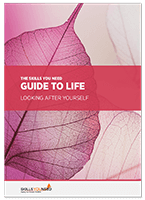Improving Communication:
Your Brain and the “3 Rs”
See also: Interpersonal Communication Skills
*Positive news alert!* Collectively, we can solve many of the world’s problems and effectively navigate common issues in our professional and personal lives. And all we have to do is boost our communication skills.
Sounds pretty straightforward, right?
Huzzah! All aboard the effective communication express. I want to sit near the captain and pull the whistle thing. Choo-choo!
Alas, fellow travelers, this is where we come to a fork in the road.
Aside from oodles of potential for positive change, 21st-century living comes with as much (if not more) possibility for stress. Meaning communication isn’t as easy as hopping the next train to positive interactions-Ville.
Approach with Caution
When we’re feeling pretty darn tootin’, we are naturally more amiable, affable, attentive and other wonderful adjectives beginning with ‘a’. We outwardly signal to others that we’re open to dialogue, leading to meaningful interactions with positive outcomes.
However, when we are stressed out, we will at best miss our station, and at worst, not even board the effective communication express. Because who needs an express ticket to positive interactions-Ville anyway?!
Not us, not on this day, and not in this foul mood-- is the attitude you will signal (even if you’re not conscious of it) L O U D and C L E A R to the people around you.
And the Communication Disaster Scenario Unfolds
When communicating under these conditions, even easy interactions can have disastrous outcomes. Maybe you misinterpret someone else’s intention, or don’t share your ideas clearly, or seem outwardly hostile and easily triggered.
If you’re lucky, a person may walk away with a slightly marred opinion of you; if you’re unlucky, you start an unproductive and unnecessary conflict. If you’re really unlucky, you will escalate said conflict.
An already bad day becomes an even worse day that may negatively affect you next week, next year, or even ten years from now.
Maybe you’re on the receiving end of an unwelcome barrage of negativity. Someone in your life has closed body language and has a face like thunder. How can you deescalate the situation, all while keeping your cool?
Thankfully:
Communication is a skill that you can learn. It's like riding a bicycle or typing. If you're willing to work at it, you can rapidly improve the quality of every part of your life.
Brian Tracy
Enter the 3Rs (regulate, rethink, respond) to the rescue. An essential tool to help you:
Navigate your social interactions even when you are feeling super stressed or dysregulated.
OR use when someone else is dysregulated, and you need to communicate clearly, and in a non-provoking way.
The Science Bit: Understanding Our Brain
To communicate well means integrating the logical, rational, and emotional aspects of ourselves, rather than compartmentalizing these areas. Here’s where the science bit comes in.
TO THE LABORATORY. Ahem.
To help us communicate healthily, even amid a whole world of potential stressors, we need to look at our brain chemistry-- specifically, the three areas of the brain integral to regulating stress and communication.
So, let’s get better acquainted with the reptilian and mammalian brain, and let’s not forget the neocortex.
Reptilian/Primitive Brain
Our reptilian brain handles our survival needs: think eating, hydration, flighting, fleeing, freezing, and (bow-chicka-wow-wow) reproduction. The very survival of our species is due to our primitive brain. So, yay!
But the operating system is pretty locked down, and it’s not adept at 21st-century living. The primitive brain categorizes events, surroundings, and people as safe (familiar) and potentially unsafe (unfamiliar). And it can’t differentiate between real or imagined threats.
So being hypothetically late for that critical deadline and being in-real-life chased by a tiger seem equally real and threatening to our reptilian brain. Meaning we often invoke the same stress responses for both scenarios: even when it’s overkill.
Our brain and body's response to stress is natural, but when stress is prolonged, without self-regulation, it can send our systems haywire. And this makes for an ill-health/poor communication combo.
Mammalian Brain/Limbic System
Our mammalian brain or limbic system is the ‘emotional’ or ‘feeling’ part of our brain, and it shines during social interaction. The limbic system produces emotional reactions based on either social rejection or approval.
Ever heard the phrase, ‘read the room,’ well, this is what our limbic system does. Behind the scenes, it assists our judgments of social hierarchies and our place within them.
So, when our primitive brain produces a survival-based response (attraction, for example), the mammalian brain will either reduce or amplify it depending on the context of a specific social interaction.
The Neocortex
The neocortex is the final piece in our communication puzzle. It handles life's complexities, like conscious thought/language, sensory perception, and spatial reasoning.
It’s quite literally the ‘forward thinking’ part of our brain and means we can interpret sophisticated social interactions and plan things. The neocortex is also the ‘reasoning’ aspect of our brain.
If we can activate it during social interactions, we open the channels for healthy and productive communication.
Your Brain and The 3Rs
A common approach to interfacing with the outside world when under stress is to react, retreat, and rethink, which is unproductive. When practicing the 3Rs, however, we first:
Engage our reptilian brain and REGULATE.
Next, we engage our mammalian brain and RETHINK.
Finally, we can engage our neocortex, which helps us override our primal instincts, and we RESPOND rather than react.
Step 1. REGULATE
First, we need to have a little sit-down with our primitive brain. It might be a tad restricted compared to other parts of our brain, but it recognizes when we’re feeling stressed before our conscious mind even has a chance to tie its shoes.
And then, it provides us with common signals that something or someone has triggered our stress alarm. Stress signals generally manifest as physical symptoms.
Maybe you develop a knot in your stomach, feel tense across your shoulders, a tightening of your jaw, your heart might race, or you could experience shortness of breath. When these signals appear, pause, and pay attention to them -- powering through will only worsen things.
Don’t Power Through
If you notice a stress signal, don’t continue with or start another task or engage in discourse. Do something to self-regulate, aka calm yourself down, instead. Practice a mindfulness exercise, write a journal entry, heck, bust out your workout planner template, and break into a sweat if you have time!
Try a simple breathing technique if you’re short on time. Breathe in through your nose and into your belly for a three count. And then exhale slowly through your mouth for the count of six. Repeat this exercise until you feel balanced.
If someone catches you in person before you’ve self-regulated, it’s probably best if you retreat. Let the person know that you’re a bit stressed out, but you will get back to them shortly. Ultimately you have avoided snapping at them or dragging them into a chain reaction of stress-fuelled crummy communication.
Step 2. RETHINK
Mammalian brain ACTIVATE! Now you’ve acknowledged that you’re feeling stressed, paused, and cooled down, you can check in with your ‘feeling’ brain and rethink your approach. Yay, you’re back where your power is, in the present moment!
You will now approach (or reapproach) a scenario or person with an increased feeling of connection, avoiding distress-- which means actively listening or engaging with the matter at hand with a sense of calm.
From this place, you collaborate with others to solve work or life issues through healthy dialogue.
Step 3. RESPOND
Finally, you choo-choose to engage the neocortex and head to positive interactions-Ville. Now you’ve put in the work to regulate your stress response, do some rethinking, you’re in a better position to respond. And better yet, you will communicate in neocortex fuelled/reasoned way rather than reactionary.
Further Reading from Skills You Need
Our Communication Skills eBooks
Learn more about the key communication skills you need to be a more effective communicator.
Our eBooks are ideal for anyone who wants to learn about or develop their interpersonal skills and are full of easy-to-follow, practical information.
FIN
Wave goodbye to unhealthy dialogue that arises from a place of stress and emotional reactivity and gets you nowhere. And say HULLO to empowered social interactions in which you communicate clearly and effectively.
After practice, the 3rs approach will become second nature, even when you feel stressed or angry. Remember, next time you’re feeling the heat, regulate, rethink, and then respond. Your co-workers, employees, friends, family, and anyone else you engage with will thank you.

About the Author
Rachael Hope is a copywriter, digital marketer, and artist on a mission to help businesses prosper in the digital world. Rachael has written extensively for mental health professionals, focusing on sharing positive communication skills with their online audiences and clients.


